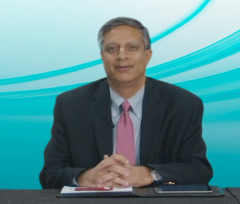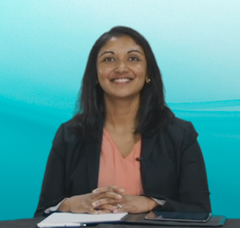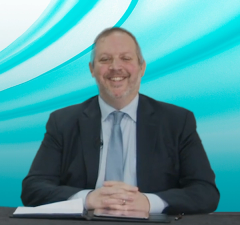
Transplant-Ineligible Multiple Myeloma: The MAIA Trial
An overview of the study design, efficacy, and safety findings of the MAIA trial.
Episodes in this series

Sagar Lonial, MD: Dr Nooka, there have been a lot of updates on MAIA, which Dr Joseph referenced just a moment ago. How do you take some of those updates, particularly the MRD [minimal residual disease] data, and apply them in a situation where we aren’t looking at a transplant-eligible patient and the risks and benefits of MRD may not be as apparent in an older patient population, but clearly have value?
Ajay Nooka, MD: Before I jump into the MAIA data, I’d like to make a brief statement on what Dr Kaufman alluded to before in terms of transplant eligibility. In terms of transplant eligibility, we have 1 of the 3 data sets that were published. One is from The University of Texas MD Anderson Cancer Center, 1 is from Mayo Clinic, and the third is from our group that Dr Joseph published showing the benefit of transplants in these older patients between the ages of 75 and 80. Age should never be considered a criterion for deeming transplant eligibility or transplant ineligibility. Sending the patient to a transplant center that can make the determination is extremely crucial. In those patients who aren’t eligible, we move on to regimens like the MAIA trial, which showed the best depth of response that has ever been shown in transplant-ineligible patients as of today.
I’ll give you a brief timeframe of where exactly we started. With thalidomide and dexamethasone years ago, the conventional result was that you were getting a CR [complete response] rate of 4%. Now in transplant-ineligible patients, combining daratumumab with lenalidomide and dexamethasone [DRd] in the MAIA trial was able to deliver 90% overall response rates—and these are deep responses—with MRD negativity in 15% of the patients. These patients didn’t receive any transplant.
Here’s a brief rundown of what exactly the MAIA trial is. The MAIA trial randomized 750 patients between daratumumab-lenalidomide-dexamethasone versus lenalidomide-dexamethasone [Rd]. Lenalidomide-dexamethasone became the standard of care in the United States based on the FIRST trial. Daratumumab-lenalidomide-dexamethasone has been shown to be superior to lenalidomide-dexamethasone across all end points of response rates, PFS [progression-free survival], and overall survival.
I’d like to focus on the updated data that were presented by Philippe Moreau, [MD,] at EHA [European Hematology Association Congress] 2021, basically showing the median follow-up of 5 years. This is a 60-month follow-up in transplant-ineligible patients who have a median age of 73 years. The 5-year overall survival is reaching 67%, which is 2 in 3 transplant-ineligible patients alive at the 5-year mark among these frail, older patients. If you look at the same number for the control group of lenalidomide-dexamethasone, it’s 53%, which is 1 in 2 people alive at the 5-year mark. This isn’t only showing a clear improvement in the overall survival. MRD negativity beyond the 12-month mark was seen in 15% of the patients in the DRd group versus less than 5% in the Rd group.
How do those data help us? Because this is a combination treatment that’s being given for a longer period in the clinics, can we use those MRD negativity data as surrogates to peel away 1 of the maintenance agents? That’s a topic for discussion, but that’s how I’d use these MRD negativity data in the transplant-ineligible patients in the long run.
Sagar Lonial, MD: We see a lot of European trials where patients over 65 are eligible for the nonintensive treatments, if you will. I’ve always been troubled by that, because we think that 65- to 75-year-old patient population can do just as well if not better—probably better—with high-dose therapy and transplant.
Transcript edited for clarity.
Newsletter
Stay up to date on recent advances in the multidisciplinary approach to cancer.





































































































